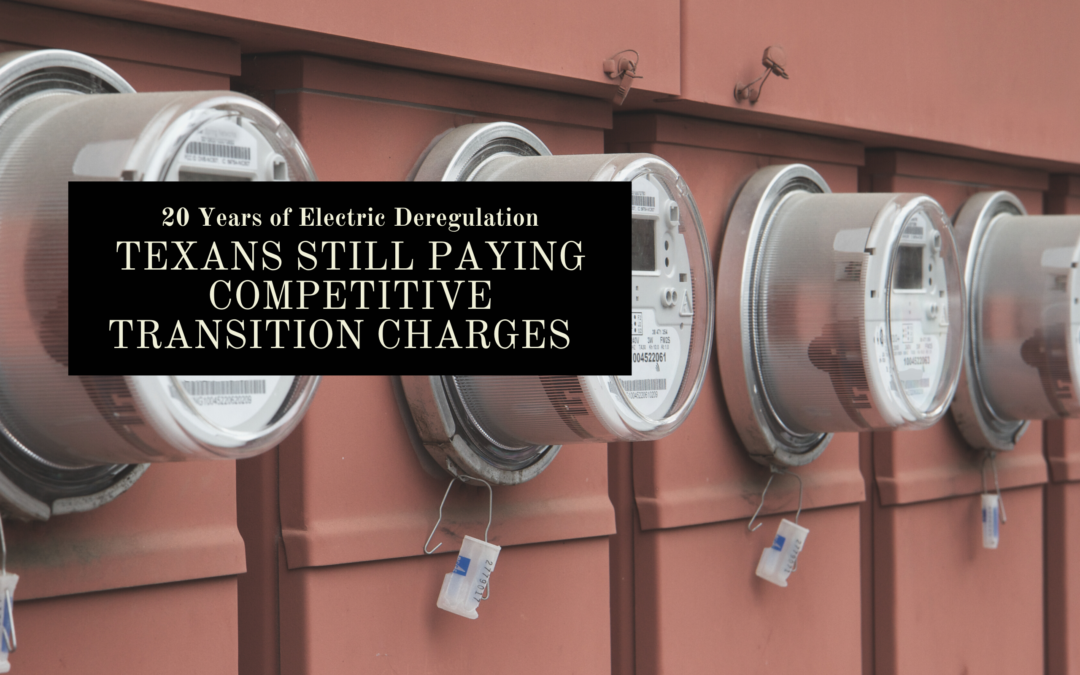Cumulatively, the charges have totaled more than $6.6 billion. Utility customers — be they home users or businesses — have had them included in their transmission and distribution rates for years.
________________________________________________
Hundreds of thousands of Texans continue paying charges associated with the transition to retail electric deregulation even though that dramatic market change occurred nearly two decades ago.
That’s according to a new regulatory analysis of the charges that cumulatively have totaled more than $6.6 billion. Utility customers — both home users and businesses — have paid them for years as part of their transmission and distribution rates. However, the last of these charges should phase out in the coming months.
Houston-based CenterPoint ended some of the “Competitive Transition Charges” last summer, although others apparently will continue through December, according to regulatory filings. AEP, a utility with holdings around Corpus Christi and South Texas, likewise indicates in regulatory filings that some of the charges would be phased out this summer while others continue. In a July filing before the Texas Public Utility Commission, the Texas New Mexico Power utility proposes to stop charging its customers by October.
Senate Bill 7
In 1999, state lawmakers adopted Senate Bill 7, the statute that created retail electric deregulation in Texas. SB 7 called for the unbundling of the state’s big legacy electricity providers and created retail electric competition in much of the state. The revamped market system went into effect on Jan. 1, 2002. You can read more about the law here.
The Competitive Transition Charges still paid by some Texans relate to “stranded costs” awarded to the state’s legacy electric utilities. Stranded costs represent the lost value of certain assets that the legacy providers claimed resulted from the market change.
CenterPoint over the years was awarded $4.1 billion in stranded costs; AEP was awarded $2.5 billion and Texas New Mexico Power received $129 million. Oncor, the utility located around Dallas and Fort Worth, had its stranded costs set at zero because of a major regulatory settlement in 2001. The Steering Committee of Cities Served by Oncor (a municipal organization previously named the Steering Committee for Cities Served by TXU) was instrumental in negotiating that settlement.
This Year’s Charges
As of March 2020, residential customers of TNMP using 1,000 kWh of electricity paid about $2.12 per month as a competitive transition charge, according to information on the PUC website. You can find that data here. In a PUC filing [see docket 51033], TNMP noted that as of June 30, it had yet to recover $2.8 million in money owed through the competitive transition charge, but the company expected to collect $2.7 million through August, 2020.
According to that filing, the company proposes to temporarily cease collections in September, and then issue refunds or seek one additional month of collections in October — depending on the outstanding balance at that time. You can read the company’s filing here.
As of March 2020, customers of AEP’s central division using 1,000 kWh paid $11.78 in monthly competitive transition charges, according to information on the PUC website. AEP Texas has stated in PUC filings that some charges phase out this year while others will continue at least through February 2021. You can read more details in dockets 50884, 48042 and 50758.
As of March 2020, customers of Houston’s CenterPoint using 1,000 kWh monthly paid $1.87 in competitive transition charges, according to information on the PUC website. You can see that data here. CenterPoint suspended some of the competitive transition charges last year, although is has proposed continuing others through December, according to regulatory filings. Read more about that here, and in Dockets 50123 and 50245 on the PUC website.

